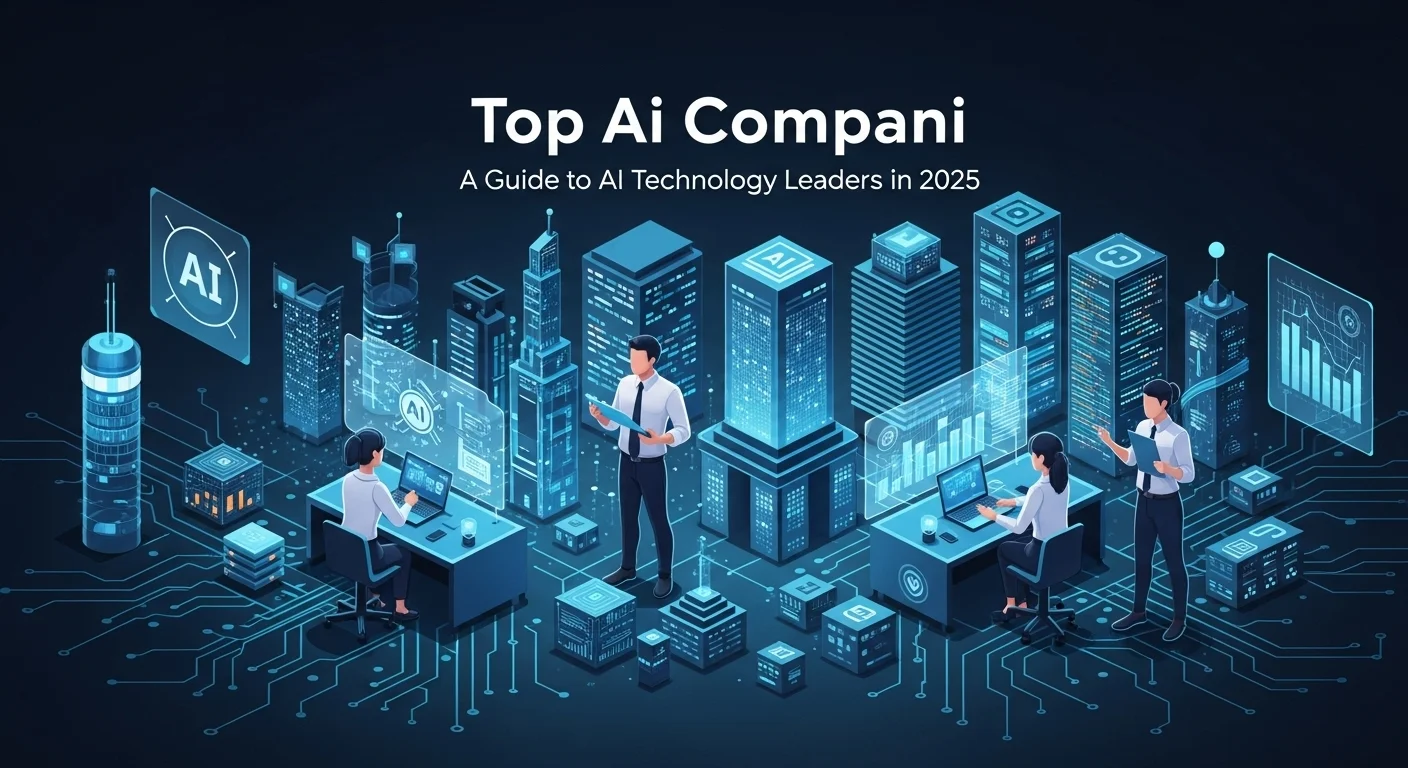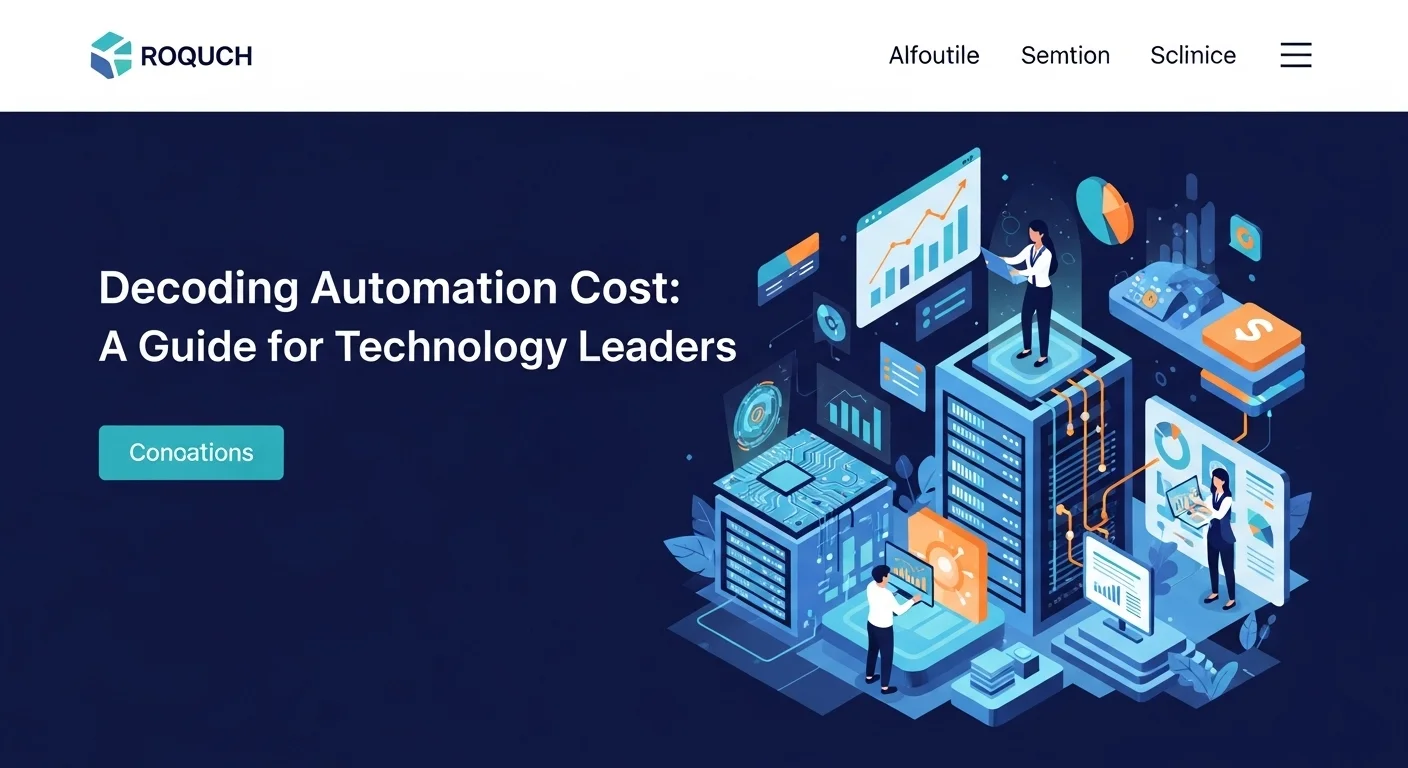Computing Infrastructure Explained: My Journey from Server Rooms to the Cloud

Executive Summary
I still remember the distinct chill of a server room and the stress of a hardware failure at 3 AM. For years, 'infrastructure' meant physical, expensive, and inflexible boxes of metal and wires. But today, that world has been completely transformed by the cloud. In this article, I'm going to pull back the curtain on computing infrastructure. We'll walk through its evolution, from those traditional server closets to the powerful, global world of cloud computing. I want to show you, in simple terms, how modern businesses and tech lovers can use these amazing tools to grow and innovate. We'll look at the core building blocks and understand why concepts like Infrastructure as a Service (IaaS) are so revolutionary. My goal is to help you see that a smart infrastructure strategy isn't just an IT line item—it's the engine that powers everything from data science to your favorite streaming service. Understanding this is key to making sense of technology today.
Table of Contents
What is Computing Infrastructure? A Foundation for Our Digital World
At its heart, computing infrastructure is everything that makes digital technology work. It’s all the hardware, software, and networking that lets us run apps, store data, and connect with each other. I like to explain it as the digital equivalent of a city's physical infrastructure. You need roads, power grids, and water pipes for a city to function; in tech, you need servers, operating systems, and networks. Without a solid computing infrastructure, nothing happens. Your favorite app won't load, your data is lost, and your services are offline. As our world becomes more digital, its importance has just skyrocketed.
In my early days, 'infrastructure' meant one thing: an on-premise data center. Companies had to buy, house, and maintain their own physical servers, storage, and networking gear. It was a massive upfront expense and required a dedicated team just to keep the lights on. I remember the long procurement cycles—if you needed a new server for a project, it could take months to get it approved, ordered, and installed. It was powerful because you had full control, but it was also incredibly rigid and slow. This lack of agility was a huge roadblock to innovation.
Everything started to change with virtualization and, later, the cloud. Virtualization let us slice up one powerful physical server into multiple 'virtual machines' (VMs), which was a huge leap in efficiency. But the real game-changer was the emergence of cloud infrastructure in cloud computing. Pioneers like Amazon Web Services (AWS), Microsoft Azure, and Google Cloud built gigantic, worldwide data centers and started renting out their computing power like a utility. Suddenly, we had a completely new way to think about and use technology.
The Core Components of Modern Computing Infrastructure
To really get it, let's break down the main pieces. Whether it’s in your own server room or in the cloud, the components are the same:
- Hardware: This is the physical stuff. The servers that do the thinking (CPU) and remembering (RAM), the storage drives that hold all the data, and the physical data centers that house and power it all.
- Software: This is the brains of the operation. It starts with the operating systems (like Linux or Windows Server) that manage the hardware, and includes virtualization software (hypervisors) that create the VMs. It also includes all the background software that helps applications talk to each other.
- Networking: This is the nervous system. It’s the routers, switches, and firewalls that connect everything together and link it to the internet. Without fast, secure networking, all the powerful hardware in the world is useless.
The magic happens when these three work together. The cloud didn't get rid of these components; it just changed who is responsible for buying and managing them.
The Rise of Infrastructure as a Service (IaaS)
The most basic and powerful cloud model is infrastructure as a service in cloud computing (IaaS). With IaaS, a cloud provider gives you access to the raw building blocks—servers, storage, and networking—on demand, over the internet. You rent what you need instead of buying it. This was a monumental shift. It turned a massive capital expense (CapEx) into a predictable operational expense (OpEx), which was a lifeline for startups and smaller businesses.
I’ll never forget the first time I used an IaaS platform. A task that used to take my team weeks—provisioning a new server—took me about five minutes with a few clicks in a web browser. That speed is transformative. It lets developers experiment and build without fear. If an idea works, you scale up instantly. If it doesn't, you shut it down and you've only spent a few dollars. This flexibility is the very definition of a dynamic infrastructure in cloud computing, an environment that can adapt to business needs in real time.
Why is a Solid Computing Infrastructure Critical for Business?
In today's world, your infrastructure is directly linked to your success. A well-designed setup, especially in the cloud, gives you some incredible advantages:
- Scalability and Elasticity: This is the ability to grow or shrink your resources automatically. Imagine a retail site on Black Friday. Cloud infrastructure can add more power to handle the traffic spike, then scale back down when things are quiet. This is a core part of a dynamic infrastructure in cloud computing, ensuring you never crash from success or pay for resources you aren't using.
- Availability and Reliability: Businesses today must be 'always on'. Cloud providers build incredible resilience by having data centers in multiple locations. If a natural disaster takes one offline, your services can be automatically rerouted to another, with no downtime for your customers. Building this level of redundancy yourself is incredibly expensive.
- Cost-Efficiency: Moving to the cloud eliminates huge upfront hardware costs and the ongoing expenses of power, cooling, and maintenance. The pay-as-you-go model means you only pay for what you consume, which almost always leads to significant savings when managed correctly.
- Innovation and Speed: When your IT team isn't busy racking servers and replacing hard drives, they're free to focus on what really matters: building better products and services for your customers. Plus, cloud providers offer powerful infrastructure services in cloud computing, like AI and machine learning tools, that allow any company to innovate like a tech giant.
Every major technological trend you hear about—from AI to the Internet of Things (IoT)—is built on the back of a powerful and flexible infrastructure cloud computing environment. It's not just a background utility anymore; it's the engine of modern business.

Your Complete Guide to Infrastructure Models and Business Solutions
Choosing the right computing infrastructure is about more than just technology; it's a core business decision. To make the right call, you need to understand the different models, how to design your architecture, and the tools that bring it all to life. Let's walk through the technical methods and business strategies that I've seen work time and again to build powerful, scalable, and cost-effective solutions.
IaaS, PaaS, SaaS: The Pizza-as-a-Service Analogy
To understand the cloud service models, I love using the 'Pizza-as-a-Service' analogy. It makes the differences crystal clear.
- Infrastructure as a Service (IaaS): This is like having the pizza place give you the kitchen, oven, flour, water, and toppings. You have complete control to make whatever you want, but you're responsible for making the dough, assembling the pizza, and baking it. In tech terms, providers like AWS or Azure give you the virtual servers and storage; you manage the operating system and everything on top. This is the heart of infrastructure as a service in cloud computing and offers maximum flexibility.
- Platform as a Service (PaaS): This is like ordering from a take-and-bake pizza shop. They provide the kitchen, oven, and the finished pizza dough. You just have to add your own toppings and bake it. In tech, PaaS providers like Heroku or Google App Engine manage the servers and operating system for you. You just focus on your code (the toppings). It dramatically speeds up development.
- Software as a Service (SaaS): This is the simplest model—you just order a pizza, and it's delivered to your door, ready to eat. You don't manage anything. SaaS products are the finished applications you use every day, like Microsoft 365, Salesforce, or Dropbox.
Most companies I work with use a mix of all three, choosing the right model for the right job.
On-Premise vs. Cloud vs. Hybrid: The Strategic Choice
Deciding where your infrastructure lives is a huge strategic decision. Each option has its place.
- On-Premise: The old-school way—you own and run your own data center. Why do it? You have absolute control, which can be necessary for very strict security or regulatory compliance. The downside? It's expensive upfront, slow to change, and a lot of work to manage.
- Public Cloud: You rent resources from a provider like AWS, Azure, or GCP. Why do it? It’s incredibly scalable, you only pay for what you use, and you get access to cutting-edge tools without buying hardware. It's the home of infrastructure cloud computing. The downside? Costs can become unpredictable if not managed, and some people worry about security (though it's often better than on-premise).
- Hybrid Cloud: A mix of both on-premise and public cloud. This is the most popular strategy I see today. Why do it? It’s the best of both worlds. You can keep your most sensitive data on your own servers while using the cloud's power and scale for everything else. It’s a great way to migrate to the cloud at your own pace.
Increasingly, I'm seeing businesses adopt multi-cloud strategies, using services from several providers to avoid being locked into one vendor and to pick the best tool for each specific task.
The Magic of a Dynamic Infrastructure
A truly modern setup is a dynamic infrastructure in cloud computing. It's not just about being in the cloud; it's about building an environment that intelligently adapts with little to no human effort. Here are the key technologies that make this possible:
- Auto-Scaling: This is where the magic happens. You set rules that automatically add or remove servers based on traffic. When your app goes viral, it scales up to handle the load. When traffic dies down at 2 AM, it scales down to save you money.
- Load Balancing: This acts as a traffic cop, spreading requests across multiple servers so that no single one gets overwhelmed. It's essential for keeping your service fast and reliable.
- Containerization (Docker & Kubernetes): This has been a revolution in software development. Containers (with Docker being the most popular) are like lightweight, self-contained packages for your application. Kubernetes is the 'orchestrator' that manages, scales, and deploys these containers automatically. It's the backbone of most modern applications.
Infrastructure as Code (IaC): The Blueprint for Perfection
To manage a dynamic infrastructure, automation is non-negotiable. Infrastructure as Code (IaC) is the practice of defining your entire infrastructure—servers, networks, firewalls, everything—in a configuration file. I tell my clients to think of it as a blueprint for their entire IT world. Before IaC, we built things by hand, leading to errors and inconsistencies. With tools like Terraform or AWS CloudFormation, everything changes:
- Consistency: You run the blueprint and get an identical environment every single time. The classic 'it worked in development but not in production' problem disappears.
- Speed: You can create a complete, complex environment in minutes, not weeks.
- Safety: You can track every change to your infrastructure in a version control system like Git. If a change causes a problem, you can roll back to the previous version with a single click.
IaC is a foundational practice for any organization that wants to get the most out of its infrastructure services in cloud computing.
How This Solves Real Business Problems
Let's see how this all comes together:
- The Startup: Instead of begging investors for money to buy servers, a startup can use IaaS to launch on a shoestring budget. They start small and let auto-scaling grow their cloud infrastructure in cloud computing as they gain users, only ever paying for what they use.
- The Global Retailer: A retailer uses a hybrid cloud. They keep sensitive payment data in their secure on-premise data center but run their website on the public cloud. They use a dynamic infrastructure in cloud computing to survive massive holiday traffic spikes without a hitch.
- The Financial Firm: A bank uses the immense power of the cloud to run complex risk analysis on huge datasets, something that would be impossible on their own hardware. They use specialized, secure infrastructure services in cloud computing to meet strict financial regulations.
In the end, a great computing infrastructure isn't just tech support. It's a strategic weapon that gives your business the speed, strength, and resilience to win.

My Top Tips and Strategies for Mastering Your Infrastructure
Getting your infrastructure into the cloud is just the first step. The real art lies in managing it effectively. Over the years, I've seen companies thrive and struggle based on how well they optimize, secure, and govern their cloud environments. Here are some of my hard-won lessons and practical tips to ensure your infrastructure is a powerful asset, not a costly liability.
Best Practices I've Learned (Sometimes the Hard Way)
Without smart management, the cloud's benefits can quickly evaporate. Here are the practices I insist on for every project:
- Create a Strong Governance Plan: This is about setting the rules of the road before you start driving. Who can create new resources? What are our security standards? How do we name and tag everything? Using Role-Based Access Control (RBAC) is crucial—give people the minimum access they need to do their job, and no more. A good tagging strategy is your best friend for managing costs and automation later.
- Obsess Over Cost Optimization (FinOps): My biggest 'oops' moment early in my cloud journey was seeing a client's unexpectedly massive bill. The pay-as-you-go model is amazing, but it requires discipline. Adopt a FinOps culture, where everyone feels responsible for costs. Use tools like AWS Cost Explorer or Azure Cost Management to watch your spending like a hawk. Find 'zombie' resources that are running but not being used, right-size your servers to match their workload, and automate shutdowns for development environments on nights and weekends.
- Embrace Layered Security: In the cloud, security is a partnership. The provider secures the physical data centers, but you are responsible for securing your data and applications within the cloud. I always preach a 'defense in depth' approach. Encrypt your data, both when it's stored and when it's moving. Use firewalls to control network traffic. Constantly scan for vulnerabilities. And please, make Multi-Factor Authentication (MFA) mandatory for every single user. It's one of the simplest and most effective security measures you can take.
- Automate Your Monitoring and Alerts: You can't fix what you can't see. Set up detailed monitoring across your entire cloud infrastructure in cloud computing. Use tools like AWS CloudWatch, Azure Monitor, or Datadog to track performance and collect logs. More importantly, set up automated alerts. You want to know if a server is struggling or a security event occurs *before* your customers do. This lets your team be proactive, not reactive.
- Have a Disaster Recovery Plan You've Actually Tested: Cloud providers are incredibly reliable, but outages can and do happen. It's your job to be prepared. Regularly back up your critical data. For your most important applications, consider a multi-region strategy so you can fail over if one region goes down. The most important part? Test your plan! A backup is useless if you don't know how to restore it under pressure.
What's Next? Future-Proofing Your Infrastructure
The tech world never stands still. To stay ahead, you need to be aware of the trends that are shaping the future of infrastructure.
- Serverless Computing (FaaS): This is the next evolution. You stop thinking about servers entirely. You just write your code as small functions, and the cloud provider handles everything else—provisioning, scaling, patching. You literally only pay for the fraction of a second your code is running. This is the ultimate form of a dynamic infrastructure in cloud computing and it's perfect for certain types of applications.
- Edge Computing: As we get more connected devices (IoT), it no longer makes sense to send all that data to a central cloud. Edge computing brings the processing power closer to where the data is created. This is essential for things that need instant responses, like self-driving cars or smart factory robots.
- AIOps (AI for IT Operations): Modern systems are too complex for humans to manage alone. AIOps uses AI to analyze monitoring data, predict problems before they happen, pinpoint the root cause of an outage, and even fix issues automatically. This is making the management of infrastructure services in cloud computing smarter and more efficient.
- Sustainable IT (Green IT): Data centers use a massive amount of energy. Sustainability is rightly becoming a huge focus. The major cloud providers are investing heavily in renewable energy. When you choose a provider, look at their sustainability reports. Optimizing your own infrastructure cloud computing usage isn't just about saving money anymore; it's also about reducing your environmental impact.
If you're looking to go deeper, I always recommend the AWS Well-Architected Framework. It's a fantastic, vendor-agnostic set of principles for building secure, efficient, and resilient systems in the cloud.
Ultimately, your infrastructure journey is a continuous cycle of building, managing, and improving. By following these best practices, embracing automation, and keeping an eye on the future, you can ensure your infrastructure is the powerful engine your business needs to innovate and succeed. The strategic use of infrastructure as a service in cloud computing and building a truly dynamic infrastructure in cloud computing are no longer just good ideas—they are essential for thriving in our digital world.
Expert Reviews & Testimonials
David Chen, Small Business Owner ⭐⭐⭐⭐⭐
This was a game-changer. 'The cloud' always seemed so abstract and technical. Alex's pizza analogy for IaaS, PaaS, and SaaS finally made it all click for me!
Maria Rodriguez, IT Manager ⭐⭐⭐⭐⭐
As an IT pro, I appreciated the depth without the dry, textbook feel. The section on Infrastructure as Code and the real-world 'lessons learned' are going straight into my team's best practices guide. Fantastic stuff.
Sam Richards, Software Developer ⭐⭐⭐⭐⭐
Excellent article! It's refreshing to read something that captures the 'why' behind the 'what' of modern infrastructure. The personal stories and clear explanations make it so much more relatable and memorable than typical tech blogs.



